(archive)
National University of «Kyiv-Mohyla Academy»
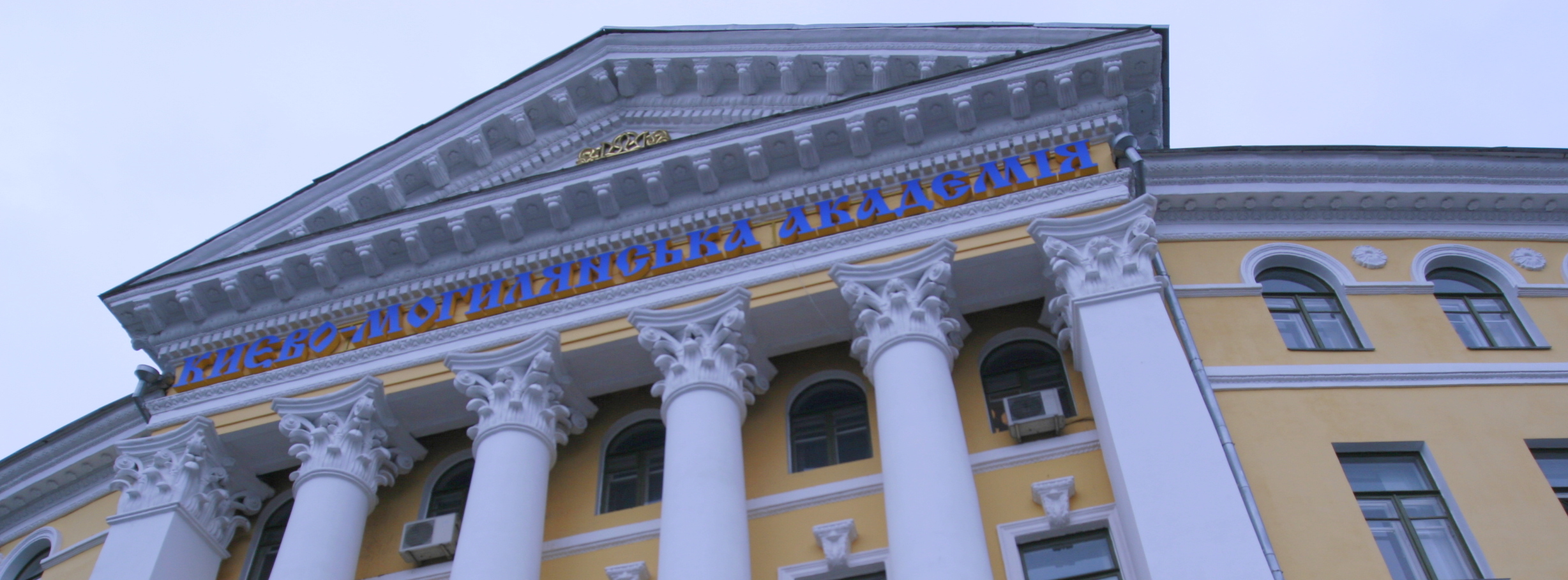
National University “Kyiv-Mohyla Academy” is a higher educational institution, it’s predecessor was the Kyiv-Mohyla Academy, established in 1615. On September 19, 1991, according to the decree signed by the Chairman of the Ukrainian Verkhovna Rada, Kyiv Mohyla Academy was restored on its historic territory in Kyiv as an independent Ukrainian institution of higher education – University of Kyiv-Mohyla Academy. In September of 1992, first students were admitted. Vyacheslav Bryukhovetsky was the one who together with academics, teachers and intellectuals developed the concept of the academy as innovative research university, as well as academic specialties, structure of educational and research activities. Among the first administrators of the revived academy were Serhiy Ivanyuk, Oleksiy Haran, Natalya Shumkova, Valery Mankivsky and others.
In 1994, UKMA received the status of a National University. As for 2020 NaUKMA proposes Bachelor degree programs on 6 faculties, more than 30 research centers and laboratories are functioning here as well as the Kyiv-Mohyla Business School and the Yukhimenko Doctoral School, first doctoral school in Ukraine.
Most of educational reforms that have been provided in Ukraine came out of here. NaUKMA was the first university in Ukraine to implement three-level educational system: Baccalaureate, Magistrate, Doctorate; а unique competitive admission process , since 1995 it’s own distinctive “NaUKMA Diploma”, since 2008 PhD program compliant with European standards. NaUKMA cooperates with 120 universities in 35 countries. More than 20% of students participate in international projects, including studying abroad.
NaUKMA has 10 academic buildings, the Research Library, the IT center, the publishing center, and the Center for Culture and Arts. A unique architectural complex of XVII-XIX centuries, comprising 11 buildings, stands on the territory of NaUKMA; its historical significance has been recognized by the state. An important task of NaUKMA is to preserve this heritage for future generations and to use it wisely.
The motto of the University is Tempus fugit, Academia sempiterna
Collection items connected with NaUKMA period
Исторія Кіевской академіи
Твір ієромонаха Макарія Булгакова, присвячений дослідженню історії Києво-Могилянської академії від заснування до початку ХІХ ст.
Kyiv Theological Academy
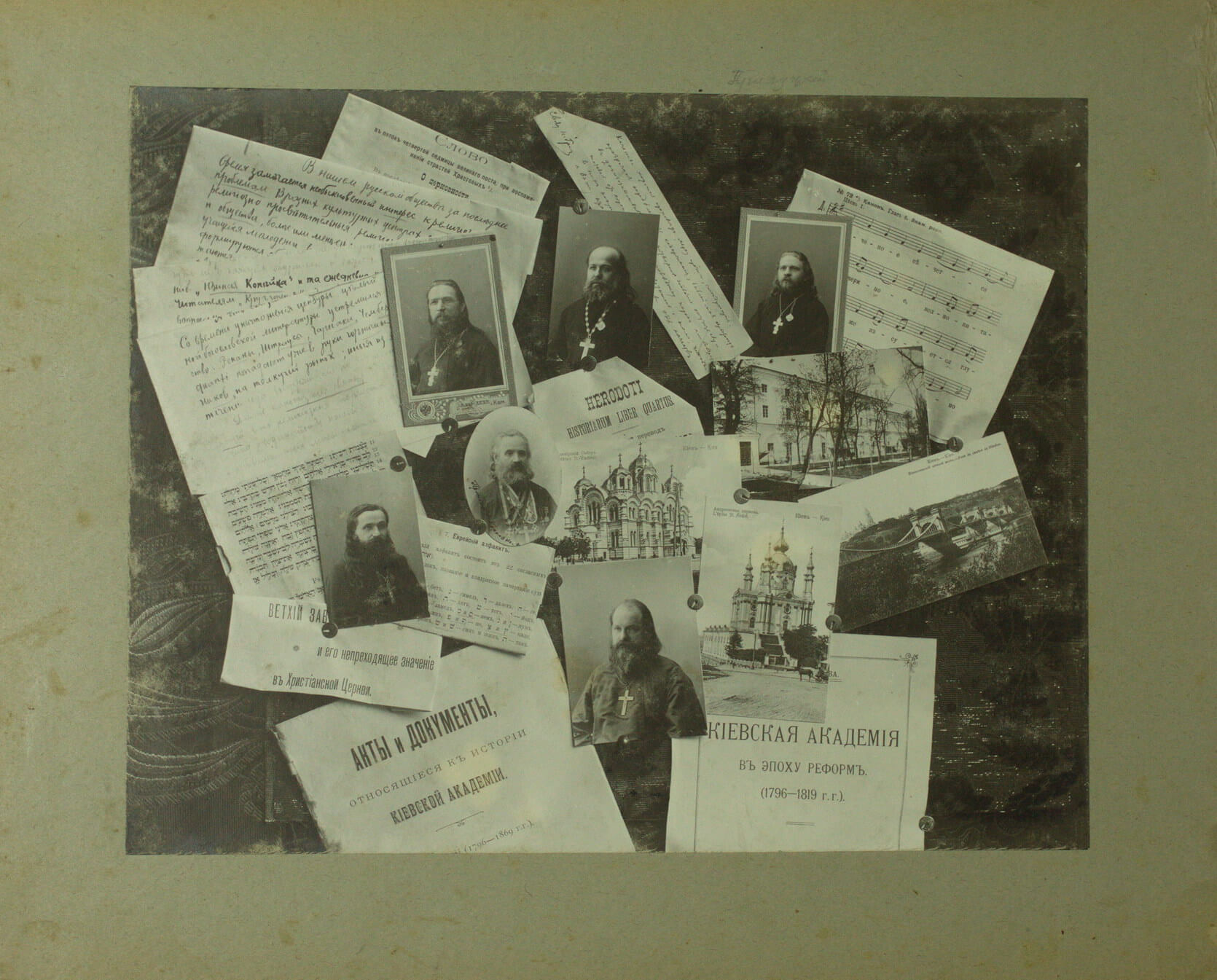
Kyiv Theological Academy is a specialized higher Orthodox educational institution opened in 1819 in the territory of Kyiv-Mohyla Academy, after the closure of the latter by the Synod of the Russian Orthodox Church in 1817. As a result of the ecclesiastical education reform which begun in 1807, in August 1817 the decision of the Commission of Theological Schools under the Synod was to temporarily close Kyiv-Mohyla Academy. In October 1817 on the basis of its classes, a spiritual seminary, county, and parochial ecclesiastical schools were created, in which mainly the alumni of St. Petersburg Theological Academy were teaching.
On September 28, 1819, Kyiv Theological Academy was opened on the territory of Kyiv Brotherhood Epiphany Monastery with which a new phase of the history of the Academy was connected. Kyiv Theological Academy operated on the basis of the statutes valid for all the theological academies of Russia and was in direct subordination to Metropolitan of Kyiv and Galicia.
The Academy was headed by a rector appointed by the Commission of Theological Schools under the Synod, who, same as in the previous periods of Kyiv-Mohyla Academy, simultaneously served as the Abbot of the monastery. According to the statutory regulations, the academy teaching staff consisted of Bachelors / later Associate Professors, Extraordinary and Ordinary Professors who, according to the general requirement, were to belong to the Orthodox confession. The lack of a skilled teaching staff in the early years was gradually overcome through engagement of the alumni of the Academy.
In 1819-1869 only successful graduates of the seminary were the students of the Academy. They held the Orthodox theological status. Since 1869 there were no restrictions concerning the admission to the Academy, and the people with the Orthodox faith were accepted to the Academy after graduating the theological seminaries or classical gymnasiums. In the early years, the students of the Academy were mostly natives from the ethnic Ukrainian territories. Later on, the number of students increased, including those from the Russian province, as well as Orthodox youth from Georgia, Moldavia, Romania, Bulgaria, Greece, Serbia, and Syria.
The training lasted four years in two departments. In particular, the lower department offered philosophical disciplines and history, mathematics and literature, and in the higher department students mastered theological disciplines and church archeology, geography, canon law, etc. In addition, Greek, Latin, German, French, and Hebrew were studied throughout the course.
The academy library was based on the book collection of the boarding Kyiv-Mohyla Academy. The Library increased thanks to the benefactors and became one of the largest libraries of Ukrainian lands. In 1915, for example, it included more than 150,000 printed publications.
Several periodicals were published in the Academy, including Voskriesnoye Chtieniye [Sunday Reading] (1837-1912), Trudy Kievskoy Dukhovnoy Acadiemii [Proceedings of Kyiv Theological Academy] (1960-1917), Kievskiye Ieparkhialnyie Vedomosti [Kyiv Diocesan News] (1879-1886). In 1872, the Church and Archaeological Museum opened in the Academy. It was the first museum of this type in Russia. Оne of the largest in Europe collections of church antiquities was collected in this museum.
In 1882, Epiphany Brotherhood was restored within the Academy. This organisation financially supported poor students and graduates of the Academy. In 1901, the Church and Archaeological Society was founded in the Academy.
Students and teachers of the Academy made a significant contribution to the development of theology, Orthodox philosophy, pedagogy, church history, etc.; in particular, those were A. Bulhakov, M. Olesnytsky, F. Filaretov, B. Bohdashevskyi, O. Hlaholiev, V. Pevnytskyi, P. Iurkevych, O. Novytskyi, M. Bulhakov, M. Petrov, S. Holubiev, F. Tytov and others.
Kyiv Theological Academy was liquidated by the Soviet authorities on the order of the People’s Commissariat of Ukraine on April 26, 1919. As a result of the appeals of the rector and professors of the Academy, Kyiv authorities allowed to resume the functioning of the institution under the new name of Kyiv Orthodox Theological Academy in 1920-1924. During the subsequent decades of the twentieth century, various educational, scientific, and medical institutions were located on the territory of the Academy – until 1991, the time of the revival of Kyiv-Mohyla Academy in independent Ukraine.
Collection items connected with Kyiv Theological Academy period
Стара вища освіта в Київській Україні XVI-поч. XIX ст.
Книга професора Київської духовної академії Титова Федора Івановича присвячена історії Вищої освіти на Наддніпрянській Україні до початку ХІХ століття. Увага автора зосереджена на історії Києво-Могилянської колегії.
Фото Олексія Ненадкевича
Фото студента Імераторської Київської Духовної Академії Олексія Михайловича Ненадкевича, подароване його сином Миколою Ненадкевичем
Посвідка студента Київської духовної академії Олексія Ненадкевича
Посвідка студента третього курсу Імераторської Київської Духовної Академії Олексія Михайловича Ненадкевича, видане єпископом Василієм, настоятелем Богоявленського монастиря і ректором академії (в миру Дмитро Іванович Богдашевський). Документ надавав право студенту вільно проживати у місті Києві та його околицях протягом півроку
Фотоальбом випускників Київської духовної академії (1905 р.)
Пам’ятний випускний чорно-білий фотоальбом із фотографіями у вигляді колажів викладачів, духівництва, приміщень, навчальної літератури, краєвидів Київської духовної академії.
Фотоальбом випускників Київської духовної академії (1903)
Випускний альбом 56-го випуску студентів Київської духовної академії (1899-1903), містить 10 картонних сторінок, на які з обох сторін наклеєні фотографії з портретами викладачів та випускників КДА, краєвидами Києва, будівель КДА.
Систематическій каталогъ книгъ библіотеки Кіевской Духовной Академіи
З 1890 по 1915 рр. у світ вийшло п’ять томів (в тринадцяти випусках) «Систематичного каталогу книг бібліотеки Київської духовної академії». Крім того, у 1906 р. був випущений окремим виданням систематичний каталог Полоцької уніатської бібліотеки, переданої до КДА у 1900 р….
Kyiv Mohyla Academy
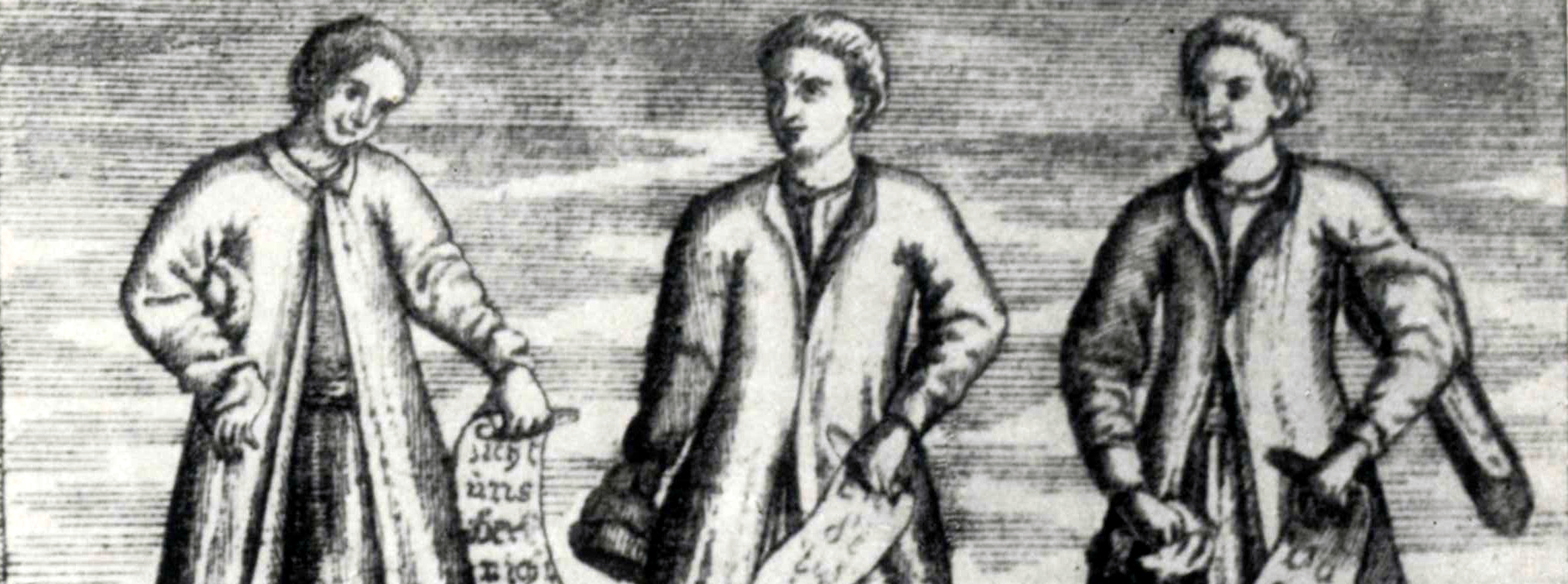
The Kyiv-Mohyla Academy is an educational institution dating back to 1615 (the Brotherhood School) and to its reform by the imperial Russian authorities in the beginning of the nineteenth century: closing in 1817 and reopening in 1819 as the highest ecclesiastical institution in the newly created system of religious education.
According to the Treaty of Hadiach of 1658, between Hetman Ivan Vyhovsky and the representatives of King Jan II Casimir, ratified in the cut-off by the Sejm of the Commonwealth in 1659, the Kyiv-Mohyla Collegium was granted the university status: it received the same rights as Krakow Academy (then the Jagiellonian University).
After the incorporation of Kyiv into the Moscow State, which did not yet know the university tradition, its rulers asserted certain rights of the Kyiv-Mohyla Academy, in particular, by certificates of 1694 and 1701. However, these documents not only did not give the status of “academy” to the Kyiv institution, but even cut off the university rights. In the Academy itself, its self-governing (university) status was derived from the Sejm Constitution of 1659. In 1817, by the decision of the Synod of the Kyiv-Mohyla Academy, it was closed to implement the provisions of the new charter. The same year a seminary was opened on its territory, followed in 1819, under the new charter, by the Kyiv Theological Academy.
For more than 150 years of its existence, representatives of different social classes studied at the Academy, regardless of the material status of their parents. It took different time to complete a course of study; for example, from the end of the 17th century till the 1770s it was 12 years. The students had the right to study as long as they wished, without age restrictions.
The backbone of the curriculum consisted of analogy, infima, grammar, syntax, poetics, rhetoric, philosophy, and theology. At different times, in particular under the influence of pan-European education modernization processes, other individual courses were taught, or knowledge of various sciences was provided within the compulsory program.
For instance, Greek, Polish, German, French, Hebrew, Russian, history, geography, mathematics, music, singing, drawing, medicine, physics and other subjects were taught. After studying in grammar classes, all courses (except languages) were taught in Latin.
Well-known professors and intellectuals taught at the Kyiv-Mohyla Academy. The students of the Academy were future hetmans and hierarchs, representatives of the Cossack elders and nobles, authors of philosophical and theological works, musicians, artists, physicians, and political figures.
The level of education at the Academy and its authority attracted the natives of different provinces of the Commonwealth (when Kyiv was seized by the Russian state); Bulgarians, Vlachs, Greeks, Moldovans, Russians, Romanians, Serbs, Montenegrins. Knowledge of Latin and typical humanistic subjects, the graduates of the Academy could continue their education in the educational centers of Central and Western Europe. The graduates of the Kyiv-Mohyla Academy became known in various spheres of activity (at church and political levels, in science, education, and art) far beyond Kyiv and Ukraine.
Collection items connected with Kyiv Mohyla Academy period
З історії Києво-Могилянської Академії ХVII-XVIII ст.
Києво-Могилянська академія за силою впливу на буття українського народу, попри майже 400-ліття від початку їі заснування, залишається тією складовою, що й сьогодні формує наш духовний світ. Це видання – короткий виклад історії виникнення й діяльності Академії, її могутнього впливу на…
Церква Благовіщення Пресвятої Богородиці при Києво-Могилянській академії
Ця праця є першою в Україні спробою дослідити історію одного з найвідоміших національних храмів – церкви Благовіщення Пресвятої Богородиці при Києво-Могилянській академії.
Могилянсько-Мазепинська академія, 1632-1982
Вперше друковано цей огляд в “Українському Православному Календарі на І958 р.
Педагогія Київсько-Могилянської академії (1631-1817)
Текст докторської дисертації отця Ісидора Патрила, яку він захистив 1944 року в Українському Вільному Університеті у Мюнхені.
Исторія Кіевской академіи
Твір ієромонаха Макарія Булгакова, присвячений дослідженню історії Києво-Могилянської академії від заснування до початку ХІХ ст.
Атестат Федора Афанасієва
Атестат студента Києво-Могилянської академії, виданий Федору Афанасієву, сину козака Гната Афанасієва із села Щебри Глухівської сотні Ніжинського полку (тепер Глухівського району Сумської області). Атестат підписали ректор архімандрит Варлаам Миславський, префект ігумен Димитрій Устимович, писар студент філософії Іван Стовпяцький.
Kyiv Mohyla College
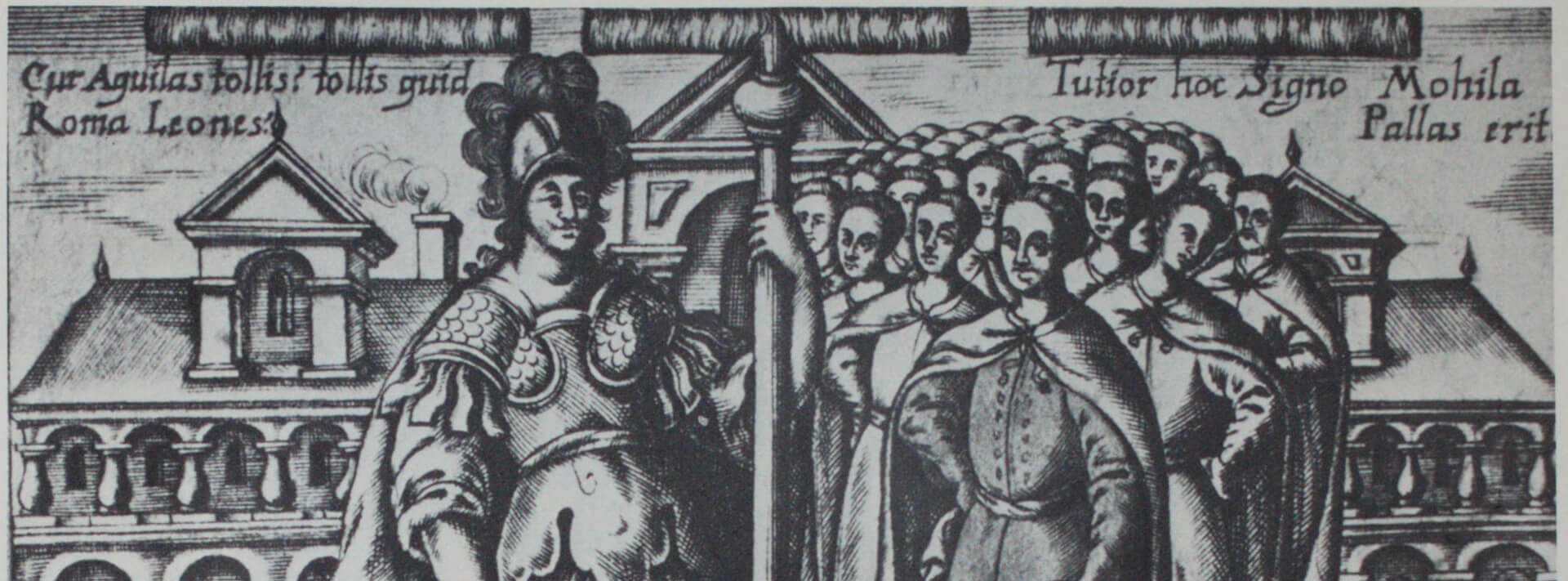
The Kyiv-Mohyla Collegium was founded in 1632 as a result of uniting the Kyiv Brotherhood School and the Kyiv Pechersk Lavra School and entered the history of the University of Kyiv-Mohyla Academy as the second stage of its development. Petro Mohyla, in the status of the Archimandrite of the Kyiv-Pechersk Lavra, according to the will of the first rector of the Jov Boretsky Brotherhood School of Kyiv as for supporting the school in Podil, joined the Kyiv Brotherhood, got the title of Senior Brother, patron and founder of the Kyiv Brotherhood Collegium (afterwards, the Kyiv-Mohyla Collegium). For the needs of the Collegium and the monastery, Petro Mohyla built one of the first KMA buildings, the refectory with St. Hlib and Borys Church, where disputes were held and the first library was located. The College was officially approved in 1635 by the Polish King Władysław IV Vasa.
The collegium was not just a formal union of the two schools, but in fact, a new educational institution modelled after Jesuit collegiums, which were the most progressive centers of education in Europe in the seventeenth century. In addition, to ensure a high level of instruction, Petro Mohyla, at his own expense, sent future faculty members to study at Western European universities and academies. The main language of instruction was Latin, which at that time was the language of international communication in science, jurisprudence, and political life. The curriculum included so-called schools (classes or courses): analogies, infima, grammar, syntax, poetics, rhetoric, logic, and dialectics. The first four classes gave a general liberal arts education; the poetics class offered the art of verse; the class of rhetoric, the theory and practice of oratory. The class of philosophy, in addition to logic and dialectics, included the natural sciences: physics, mathematics, astronomy, zoology. Afterwards, the collegium introduced a university course in philosophy, which started in the 1646-1647 academic year and was conducted by the Rector, professor of the collegium Innocent Giselle, who wrote a student textbook on philosophy “Opus totius philosophiae” (“A composition on all philosophy”). In addition to Latin, the Collegium offered Old Ukrainian, Church Slavonic, Greek, and Polish. Characteristic of the educational process in the collegium were public debates. The collegium, continuing the tradition of its predecessor, the Kyiv Brotherhood School, was an all-inclusive institution without age restrictions. Thanks to Petro Mohyla’s donation, the Collegium had one of the largest libraries of its time, which included more than 2,000 domestic and Western European publications. The Kyiv-Mohyla Collegium contributed to an increase in the number of educated people, elementary school teachers, “traveling student” teachers. Owing to the high standards of education, the students of the Collegium continued their studies at the universities of Krakow, Heidelberg, Königsberg, Leipzig, Padua, Rome, Paris, and Vienna.
The Collegium was headed by Rector who was at the same time Hegumen of the Kyiv Epiphany Monastery. The rectors of the Collegium were known at that time theologians and philosophers; namely, Isaiah Trofymovych-Kozlovskyi (1632-1638), Sophronia Pochasskyi (1638-1640), Ignatius Oksenovych Starushych, Joseph Kononovych Horbatskyi (1640-1642), Innocent Gisel (1640-1642), -1650). According to the Treaty of Hadiach of 1658, between the Hetman State and the Commonwealth, the Kyiv-Mohyla Collegium was granted the status of academy: it received the same rights as Krakow Academy (then the Jagiellonian University). After the incorporation of Ukrainian territories into the Moscow State, the university status and the title of “academy” of the Kyiv-Mohyla Academy was officially recognized by certificates of the Russian Tsars in 1694 and in 1701.
Collection items connected with Kyiv Mohyla College period
Исторія Кіевской академіи
Твір ієромонаха Макарія Булгакова, присвячений дослідженню історії Києво-Могилянської академії від заснування до початку ХІХ ст.
Теза на честь Рафаїла Заборовського
Гравюра до диспуту, що відбувся 1739 року. У центрі — поколінний портрет архієпископа, вміщений в овальну рамку. Навколо портрету зображені алегоричні жіночі фігури, що персоналізують філософію, медицину, поезію, астрономію. В бічних частинах розміщені клейма з алегоріями, зображення навчального (тепер…
Kyiv Brotherhood School
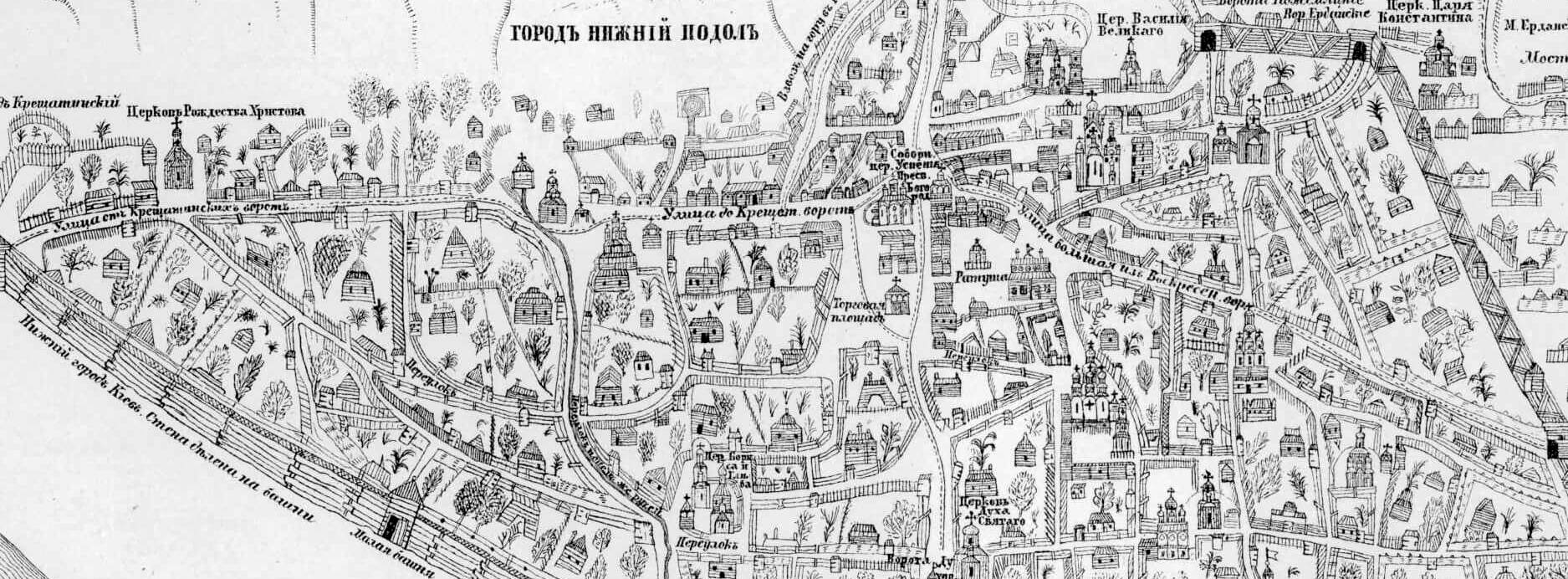
Kyiv Brotherhood School, the ancestor of Kyiv-Mohyla Academy, was founded in 1615 by Kyiv Epiphany Brotherhood, which is reflected in the very name of the school. Kyiv Brotherhood arose and functioned in the context of the religious and cultural movement of the second half of the 16th century — the beginning of the 17th century. It belonged to the cluster of Orthodox brotherhoods — religious and cultural organizations that arose in the Orthodox — primarily, the bourgeois — environment in the Ukrainian voivodeships of the Rzecz Pospolita and in the territories of the Grand Duchy of Lithuania. Those were, in particular, Lviv, Vilno, Kamyanets, Rohatyn, Ostroh, Przemysl, Kholm, Zamostia, Berest, Vinnytsia, Polotsk, and others.
The initiators and members of the brotherhoods set themselves the goal of protecting denominational interests, trying to control the hierarchy and parish clergy, taking care of the behavior of their members, helping them, establishing schools and printing houses, controlling and caring for their further development.
Notable about Kyiv Brotherhood is the fact of active participation of the clergy and gentry, and later — the Cossacks, in its creation and functioning, as well as the fact of its rather late appearance. Famous intellectual monks Elisha Pletenetsky, Isaiah Kopynsky, Zakharia Kopystensky, Job Boretsky, and others were among the first founders of Brotherhood and School. The earliest fixation of the members of Brotherhood is dated back to the beginning of January 1616.
The creation of the school was financially supported by Halshka (Yelyzaveta / Elizabeth) Hulevychivna from an Orthodox noble family. According to the record in Kyiv Magistrates’ Books, on October 15, 1615 she granted her estate in Podil to Kyiv Brotherhood in order to establish a monastery, school, and shelter for pilgrims. In 1620, Hetman Petro Sahaidachny joined Brotherhood with all the Zaporizhian Army and in that way supported it not only financially but also with the Cossack saber.
With the participation of the Cossacks and Kyiv Brotherhood in 1620, Kyiv Epiphany Monastery received from Jerusalem Patriarch Theophanes III the right of stauropigy, that is, the direct patriarchal subordination. In 1629 King Sigismund III sanctioned the functioning of Brotherhood by his charter. In the second half of the 17th century the references to the Brotherhood disappear from the documents.
Kyiv Brotherhood School was created according to the model of other brotherhood schools, primarily Lviv Brotherhood School. That means that the school was based on the principle of accessibility for all social strata. Students schooled here regardless of their social origin and material wealth of their parents. Children of the middle class, Cossacks, clergy, and gentry studied at Kyiv Brotherhood School.
Students studied “Slavic-Ross” (likely, the Church Slavonic language in Ukrainian edition), Greek, Polish, and Latin, grammar, poetry, arithmetic, rhetoric, music, the basics of philosophy, and, possibly, the beginnings of theology. Clerical and secular persons were the teachers. For instance, the names of the teachers Yakiv Memlevych, Sava Andriyevych, Vasyl Berezetsky are known.
The Rectors of the school were Job Boretsky (1615-1618), Meletiy Smotrytsky (up to 1620), Kasiyan Sakovych (1620-1624), Spyrydon Sobol (1626-1628), and Khoma Yevlevych (1628-1632), who also taught at school.
In 1632 Kyiv Collegium was founded on the basis of Kyiv Brotherhood School as a result of the merger of the brotherhood and lavra schools, and the reform of the educational principles and program. This happened with the direct participation and support of Petro Mohyla.
Collection items connected with Kyiv Brotherhood School period
Исторія Кіевской академіи
Твір ієромонаха Макарія Булгакова, присвячений дослідженню історії Києво-Могилянської академії від заснування до початку ХІХ ст.






















